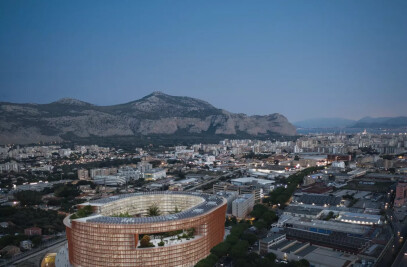The Ionian descent is a silent intervention, which fits discreetly on Capo Mulini steep cliff, a fraction of Acireale and the northern limit of the Gulf of Catania. The project is located in a great valuable area in terms of landscape, where the lava stone coast rises steeply to the Ionian Sea. The new route, divided into three material-technological parts, overcomes a significant difference in height that prevented access to the shoreline. The central part, founded at the cliff, is the only permanent area, whereas the steel upper section, and the wood part which flows into the sea, are structurally independent and designed as seasonal.

The upper part of the descent consists of a slender metallic structure, close to the curious lifeguard cabins. The central part stipulates the most accomplished and ambivalent relationship with the cliff: a relationship suspended between antagonism and mimicry. Prefabricated elements such as lightened bush-hammered concrete blocks lying on the lava stone have been used, partially supporting the rock roughness and the large number of prickly pears. The landing at sea consists in a functional raft made with wooden beams.

The Ionian descent results from a blend of a studio design and an on-site design carried out by the involved worker who dealt with the architecture materials and the natural context and molded the structure between the lava stone and the Ionian Sea.







































